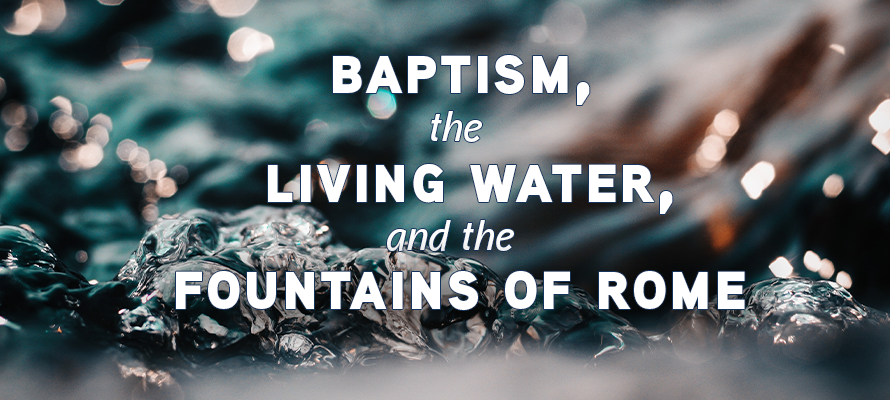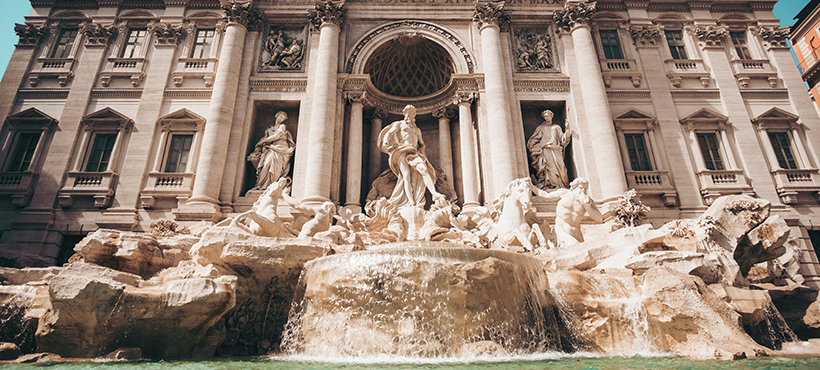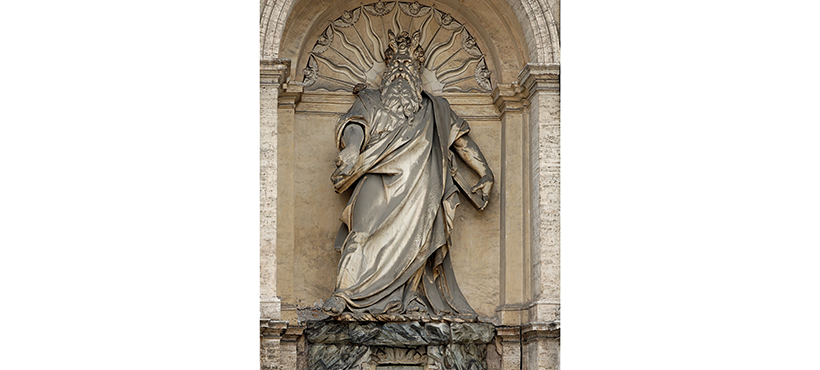
Close to three years ago, I had the blessed opportunity to visit Rome, Italy. I, along with many extended family members, flew in to give our support to a cousin of mine (now a priest) whose ordination to the diaconate was held in St. Peter's Basilica.
The trip served not only to show our love for my seminarian cousin in this important step on his path to the priesthood, but it also provided my family and me the chance to deepen our faith.
There we were in Rome, the center point and heart of Christendom. Walking the black cobblestoned streets, visiting the countless cathedrals, and venerating reliquary sites brought to life a vibrant aspect to our faith. This was an experience which really lent itself to refreshing my own faith life – my devotion and relationship with our Lord.
There are many picturesque elements to Rome and the Vatican City I enjoyed while on pilgrimage. There was delicious gelato, inspiring street musicians, rendezvous of various religious orders, and the majestic fountains. These fountains are typical to many Italian cities of Christian importance. Embedded in the culture, solidified in stone, many of these fountains harken back to the fundamentals of Christian truth.
If you see these Roman fountains, you can't deny that they're works of art in their own right. Take the Trevi Fountain, for example. We were able to visit it on multiple occasions, both during the day and at night. It's an elaborate and extravagant Baroque representation carved from travertine stone, the same material from which the Colosseum was constructed. The Trevi is a gorgeous piece of craftsmanship.

Though this may be the most famous fountain in Rome, there are countless others throughout the Eternal City, and they each have their own unique style. Some are humbler, simpler fonts, while others are monstrosities of stone encased in grander architectural structures. An example of the latter is the Fountain of Moses, which predates the Trevi by a few centuries.
The Fountain of Moses was commissioned by Pope Sixtus V and executed in the late 16th century as part of a slew of new fountains that his Holiness had erected during his time in the papal office. In this display, Moses is seen holding the Ten Commandments in his left hand. With the other hand, he directs the onlooker's attention to the gushing waters at his feet.

Art fulfills its fullest potential in those instances when it communicates something greater or higher than itself. It is transcendental, reflecting the beauty of a deeper truth. It invites the observer to contemplate more than just the materials it is made of or the reality it portrays. The fountains are splendid examples of this. What then are these fountains communicating?
The fountains of Rome communicate and symbolize baptism – the font of Eternal Life. Water is the key form in this creative expression. This element is conveyed both by the gurgling spouts as well as by the figures which show up on the fountains. So, for example, Moses led the Israelites in a passage through water (a typological precursor to baptism). And in the Fountain of Moses, he once again leads the observer to contemplate the water that symbolizes baptism.
The water running through the fountains only becomes an important part of the art once we recognize the connotation of water. Water has two significant properties. Firstly, it has almost always functioned as something used for washing, cleansing, getting rid of what doesn't belong. Secondly, and more importantly, it is water that supports all life on Earth. Without it, the vine withers; the tongue swells up and goes silent.
These generic properties of water ought to sound familiar because they're also baptismal functions. The Sacrament of Baptism cannot be disassociated with one's relationship with Christ. In fact, it is this very sacrament that inaugurates a friendship with Christ and enacts an adoption into the family of the Trinity. By our baptism, we enter into the mystical Body of Christ. We are supplied with the grace we lost through the Fall of Adam and Eve. We become sons and daughters of the Father.
The effects baptism has on the soul are both purging and life-giving – the two properties of water itself. Sanctifying grace offers to the soul new life. We are reborn of the Church, the bride of Christ. At the same time, baptism removes the condition of Original Sin from our souls. We are cleansed from this Original Sin – not symbolically, but in actuality. Baptism brings us back into union with our Creator. It gives us something we couldn't attain on our own. The Church has described this fundamental sacrament as “the washing of regeneration and renewal by the Holy Spirit.” It is truly life-giving and life-sustaining.
It is a wonderful blessing that the architectural beauty of Rome’s fountains directs the minds and hearts of its visitors toward the things of heaven – towards the higher good. It is here, in the heart of Christianity, where these fountains remain a constant reminder of entering into salvation via the waters of baptism, just as Moses led the fleeing Israelites through the Red Sea and into freedom from the Egyptians. We can be reminded daily when observing these fountains of our passage through this life to the promise of Eternal Life in Heaven with God.
Fountains are not a stagnant art form, but rather a living one. Jesus, the living water, consecrated baptism when he, the God-Man who was utterly blameless, submitted himself to baptism. The flowing waters of the magnificent fountains of Rome sing of a divine truth. It's that same truth that is reflected in the holy water font of your local parish, reminding us of the life Christ gives through the Church.
During this Easter Season, as we renew our baptismal vows weekly and welcome new family members into our Church Family, let us reflect upon all of the graces we received in our own baptism and praise God for His continued blessings and graces in our lives.
+JMJ+



